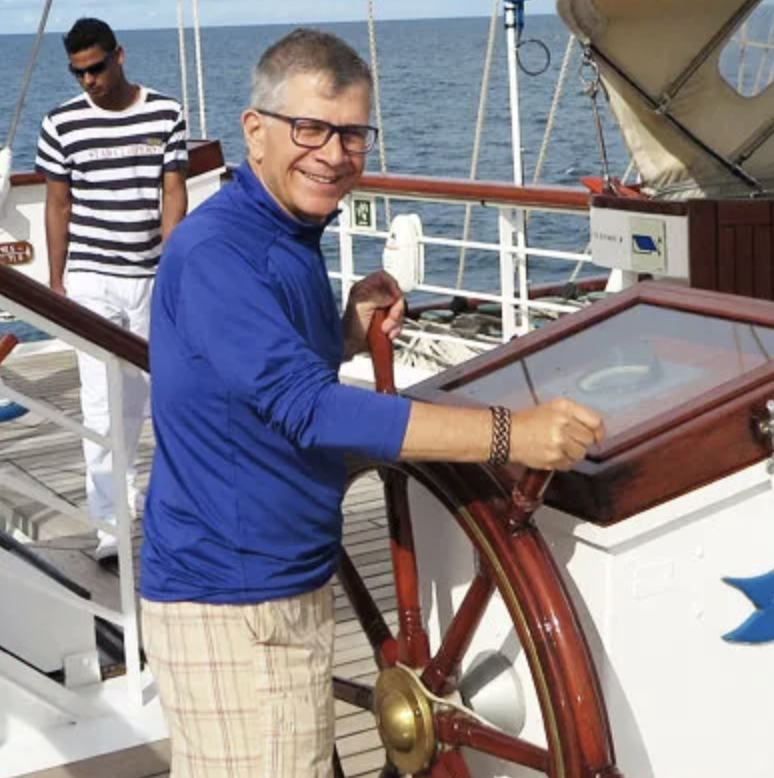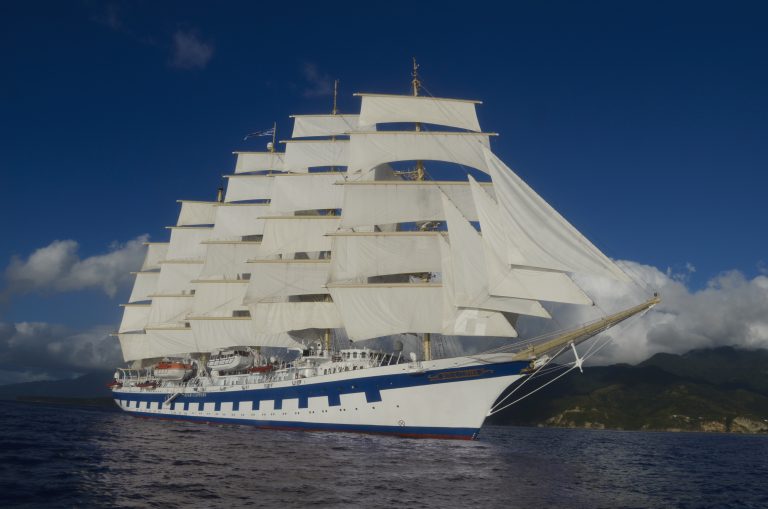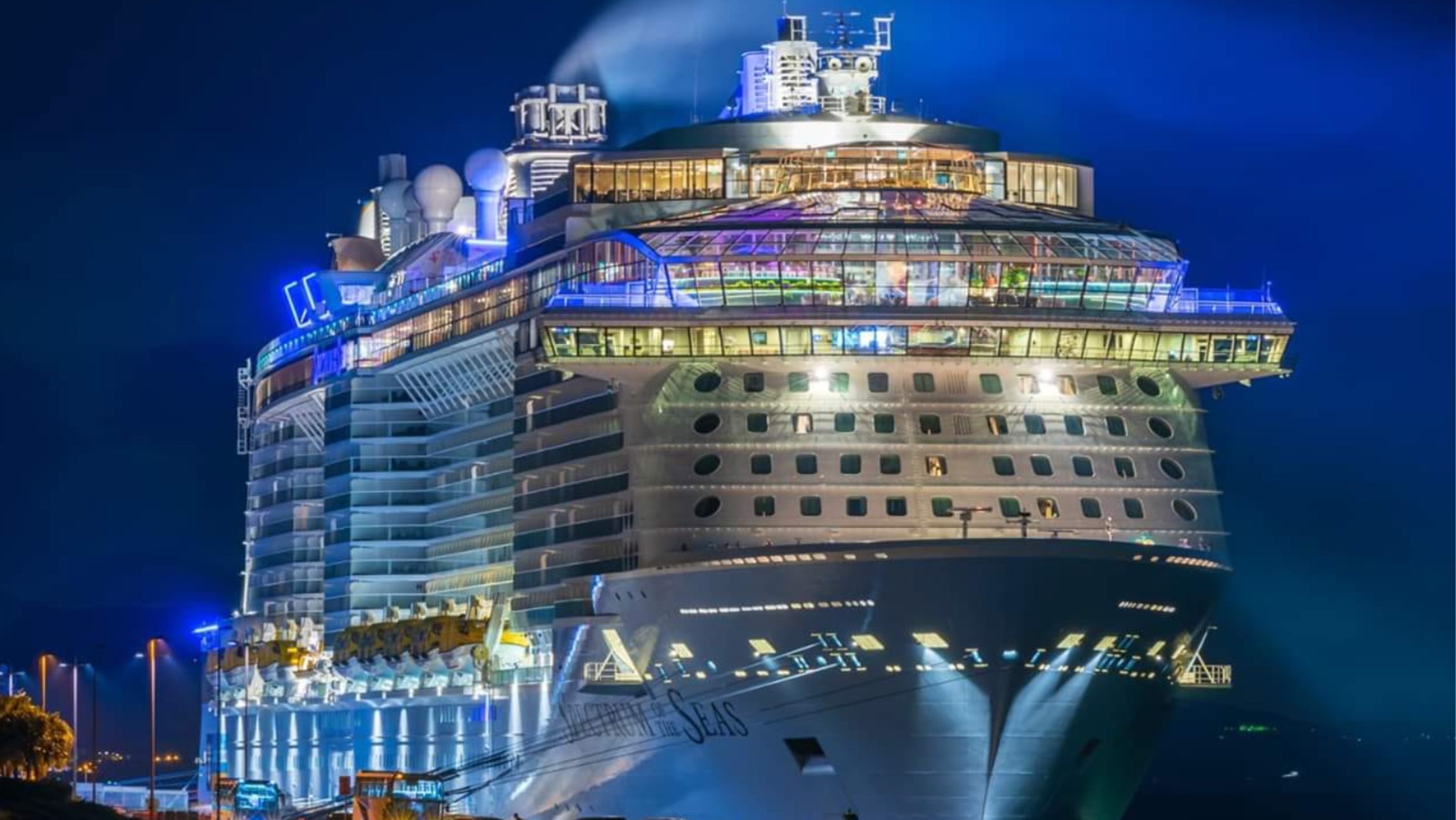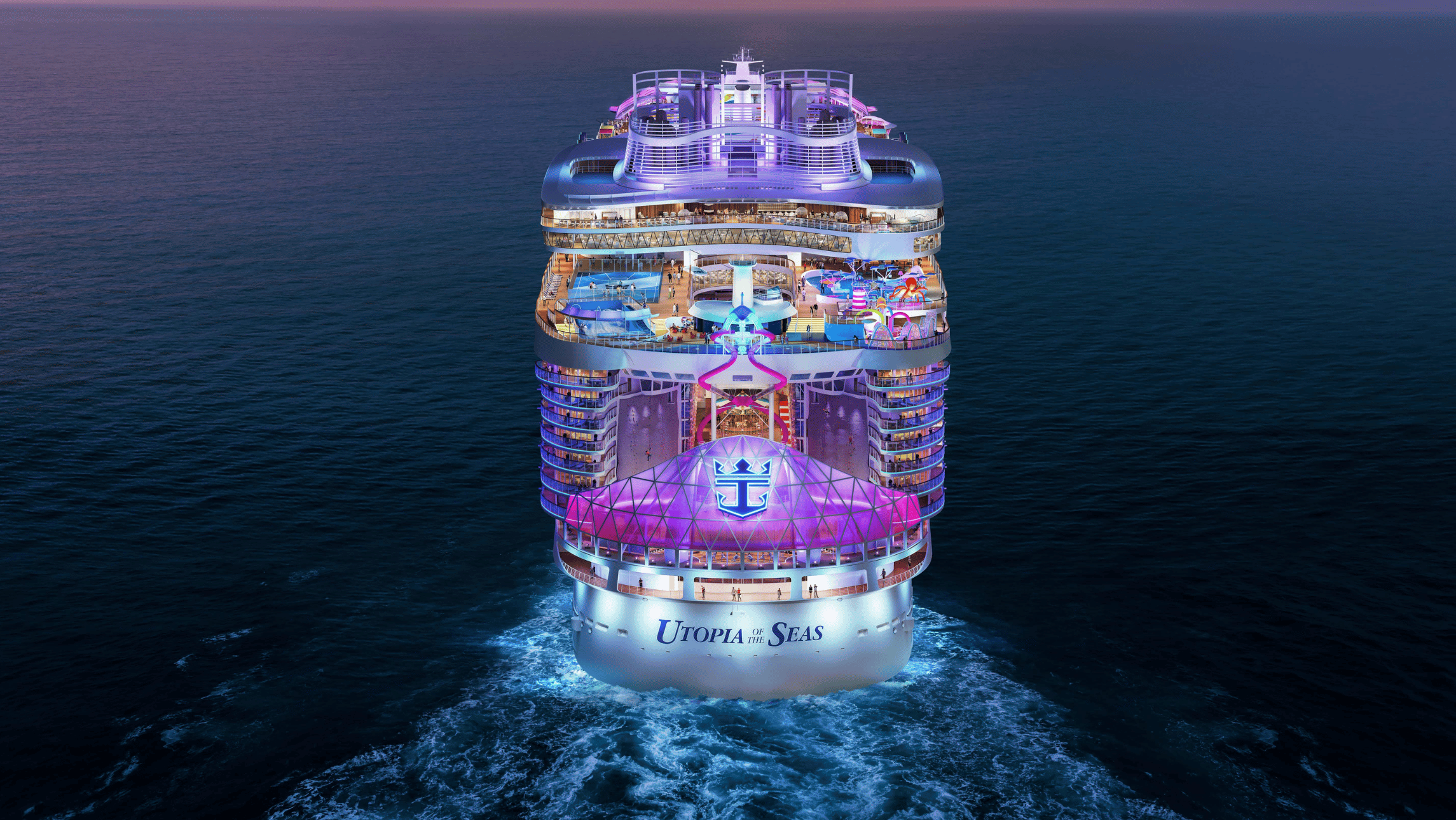We are sitting in the Tropical Bar of Royal Clipper watching an angry Mount Etna hurl sparks and smoke into the night sky.
The day before, a shore excursion took us to Pompeii, scene of perhaps the most infamous volcanic eruption.
But that was AD79. This is 2014. Surely, the same thing couldn’t happen again?
If it did, the rather extraordinary Royal Clipper would not be the ideal ship to be aboard. She isn’t built for fast getaways. The world’s largest five-masted square-rigger is great with a tidy 25-knot breeze, but not so good on a balmy Mediterranean night when the wind is barely a whisper.
But tonight is not the night for Pompeii II. The crew and young passengers are preparing a talent show. Wouldn’t want to interrupt that.
Royal Clipper is big sister to a fleet of three clipper ships. They are the creation of Swedish lawyer Mikael Krafft, and a testament to how utter folly can be turned into a triumph.
In a world where bumper cars and skating rinks are all the rage on cruise ships, Royal Clipper appears an extraordinary relic of history. Except she isn’t.
Based on a legendary square-rigger built in 1902, she was launched in 2000. So she comes with a heap of modern comforts – three swimming pools, a three-deck atrium that funnels sunlight into a three-level dining room, a marina platform for watersports, and a spa and health club complete with underwater glass portholes.
But don’t let any of this frippery fool you. She is the real deal: A 134-metre sailing ship carrying 5,202 square metres of canvas (Dacron Type 52 high modulus fibre nowadays), 227 guests and a crew of 109. Captain Jack Sparrow would be very jealous.
Royal Clipper can power up to 18 knots under full sail. Her masts are made from tapering steel tubes that conceal the exhausts from twin Caterpillar propulsion units. The rigging is hydraulic and remote controlled. Royal Clipper is really a modern marvel.
But like all great ships, she is idiosyncratic. No one is quite sure who ordered Vangelis’s Conquest of Paradise to be played every time the 42 sails are unfurled. The ritual lends an eerie piratical feel to the night as we leave Rome’s port of Civitavecchia to sail majestically down the Mediterranean coast to the Italian island of Ponza.
It’s a clarion call for the 130 guests – including a family of 12, 30 fans of an American pianist and four Australians – to come up to the main deck, champagne in hand, to celebrate.
Captain Sergey Utitsyn, a burly, dimpled Estonian, has been with the fleet since the flagship was launched in 2000. He has spent the last 14 years sailing the Med in the northern summer and the Caribbean in the winter, taking Royal Clipper (literally) across the globe each year.
He started his career on large Russian sailing ships at the age of 18, and is fanatical about the power of the wind. He has no time for the “pretenders” – competitors he won’t name. “They are not real sailing ships – they have sails just for decoration. They don’t even have a keel!”
You won’t meet a more passionate ambassador for Royal Clipper.
“We run at 60 per cent repeats and we are getting many new passengers from larger lines like P&O and Cunard, because of our unique experience. They come to us and say ‘wow’!”
It’s not hard to understand why. “Wow” is a word that’s often used around this ship. Royal Clipper is in the Guinness World Records as the largest fully rigged tall ship. Our seven-day voyage is a magnificent
mix of theatre, history and geography – a vivid reminder of why the Mediterranean is Australia’s number one foreign cruise destination. “There are usually Australians on board when we sail – sometimes five, sometimes 10 or 15,” Captain Utitsyn says.
Our first port of call is Ponza, a postcard-perfect coastal town with pastel terraces, cobbled streets and a church at the top of the hill. Locals are preparing for a festival, so the main street is decked out with fairy lights and a village band is practising in the square.
We hire a pink scooter and wobble precariously into the mountains. At a tiny village, we are reminded of what makes Italy so special.
As we’re too late for lunch, Maurizio, owner of the local pizza cafe, suggests a neighbouring restaurant overlooking the Bay of Natural Pools.
“I will call him and ask him to take care of you,’’ he says. And that’s exactly what he does. His business rival serves us a huge Italian salad of octopus and fish.
Where else would a restaurateur be so concerned about two hungry tourists that he would pass us on to the competition?
Back on the Royal Clipper in time for dinner, we settle into the wood-panelled dining room. The galley is led by Jamaican Devon Hodges and it’s roast suckling pig, cheese and crepes tonight.
Shortly after dawn we arrive at the port of Sorrento, set on the Bay of Naples. Sorrento’s beauty is legendary. Greeks sailed down the Amalfi Coast simply to marvel at the mountainous coastline.
It’s from here we take a tour of Pompeii. Our guide entertains us with stories of Mount Vesuvius. She and a million other Italians live in the path of the volcano. “But this time, we are promised we will get 24 hours’ notice of any eruptions,” she smiles. We hope she is right.
More than 40 hectares of Pompeii have been excavated to reveal an amazing preservation of the Roman city. It is humbling to discover just how smart the Romans really were. Their homes had drainage, heating and cooling systems. Their cities had spas, steam rooms and medical centres. They even had take-away food!
Back on Royal Clipper, the marina platform at the stern is open for an invigorating swim or sail on a windsurfer or catamaran.
At dusk, we head back to Sorrento for an evening meal on the waterfront.
The next day, we are in Amalfi, a historic town at the mouth of a deep ravine. It is located at the foot of Monte Cerreto and surrounded by dramatic cliffs. The Italian coastline is simply stunning.
We take a boat ride to the seaside town of Positano, renowned for its beauty and cliffs overlooking turquoise waters. We have coffee and croissants on the balcony of the hillside Hotel Marincanto. But pretty as it is, Positano is a place that has been discovered. Amalfi, on the other hand, with its grand 18th-century cathedral and its Cloister of Paradise and Basilica of the Crucifix, is wonderful.
But we must move on. We sail into Sicily and anchor at Giardini Naxos, about 5 kilometres from Taormina.
We usually avoid the so-called “exclusive experience” excursions on the grounds they are often anything but.
However, our 90-euro Sicilian lunch at the family-owned Barone di Villagrande vineyard, an hour’s drive up the slopes of Mount Etna, is very special.
The winery has been in the same
family for centuries and operations have been passed down to Franco, a fourth-generation Di Villagrande and a passionate young winemaker.
Lunch, which is served in the garden overlooking the water and mountains, begins with mozzarella cheese, homegrown tomatoes, salami and olives.
This is followed by linguine, roasted vegetables in a tangy sauce, chicken and salad. Dessert is a generous serve of almond and pistachio biscuits, ice cream, coffee and sweet wine. Each course is matched with the family’s homegrown wine, which is so delicious we take two bottles back to the ship.
Our next stop is Lipari, a fishing and farming village where vines and capers are grown. It once had a thriving trade in pumice. The main town is dominated by the Castello, a citadel surrounded by walls that date back to the 13th century.
Our journey down the coast of Italy has been a terrific experience, but now Royal Clipper needs to turn for Rome.
The ship offers organised mast-climbing and visits to the engine room. But we find relaxing by the three saltwater pools on the sun deck or playing Scrabble in the air-conditioned library equally tempting.
Carlos Ferreira, the hotel manager, shows us around the suites. He has worked in Newcastle, NSW, and knows Australia well. Royal Clipper has two Owner’s Suites and 14 Deluxe Suites with balconies. The rest of the cabins have polished wood-trimmed cabinetry and wall-to-wall carpeting, a small TV set and private bathroom. Our advice: you won’t be spending much time in the cabin, so don’t waste money on suites.
Our cabin in Category Three is comfortable, but space is limited – one side of the double bed is hard against the wall, so climbing in and out of bed is an athletic exercise. There is a small writing table, a porthole and adequate marble bathroom with a powerful shower.
The ship is fitted with stabilisers which make for a pleasant ride around the Med.
Most meals are served in the main dining room, which has free seating.
Lunch is always a buffet while dinner is a four-course affair. Afternoon tea is served at the Tropical Bar, which doubles as an after-dinner entertainment venue.
On this journey one of the guests is American pianist, Emile Pandolfi, who has a strong following in the US – some 26 Americans signed up for the cruise because of him. Otherwise, music is provided by onboard musician Gabor. There are no cabaret shows but staff members do bravely pull together for an evening performance of song and dance.
The atmosphere is relaxed. Sports and leisure wear is worn during the day but guests do spruce up for dinner.
The cruise price is not all-inclusive, so be prepared to pay for wine and drinks. Gratuities are extra and an acceptable norm is eight euros per guest per day.
Sadly, there are no plans as yet to create an Australian itinerary for Royal Clipper.
The problem, Captain Utitsyn tells us, is safety concerns and insurance for the company’s three ships, which would have to pass through pirate-infested waters around Somalia. Because the clipper ships are slow, it is feared they would be easy prey for the pirates. However, with security concerns subsiding,
there are hopes the position may change.
Royal Clipper

by Peter Lynch








